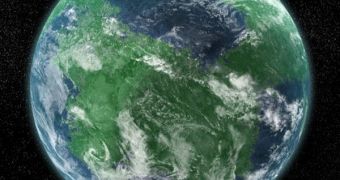According to planetary scientists, it could be that most Earth-like exoplanets orbiting other stars might in fact be nothing more than pretty-looking “dead zones.” The conclusion was drawn from an analysis which showed that many such objects may not feature a magnetosphere.
This is a layer in the atmosphere that plays a critical role in protecting Earth's surface from the harmful effects of cosmic radiation coming either from the Sun or the solar neighborhood.
Our planet is fortunately blessed with such a defense mechanism, but many other objects in our solar system do not have such a luxury. Experts say that a magnetosphere can only be produced on a solid planet like our own if a partially-molten, spinning iron core exists.
Considering the case of an exoplanet a few times heavier than Earth, the possibility that such a core is still active is fairly low. As such, the object may look pretty on the outside, but it would remain deadly for lifeforms even if located in its parent star's habitable zone.
In the new investigation, scientists simulated the inner structure of extrasolar planets between 1 and 10 times heavier than our own. The team determined that the huge pressure that much mass exerts on the planetary innards would most likely keep the entire core solid.
This means that the object will be unable to produce reliable magnetic fields, which in turn means that there would be nothing powering up the magnetosphere. Space radiation would have free reign over that exoplanet, preventing life form developing or settling in there.
The investigation was conducted by a team of investigators at the Institute of Mineralogy and Physics of Condensed Matter in Paris, France. The researchers were led by expert Guillaume Morard.
In addition, the group determined, the absence of a magnetosphere would make it very difficult for the atmosphere to withstand the constant attacks of radiation particles slamming into it.
In the end, it would succumb and allow itself to get carried away into space, exposing the planetary surface directly to the space environment. Chances of something growing under such circumstances are understandably quite low, Daily Galaxy reports.
In fact, such an exoplanet would look like Mars. The Red Planet had a magnetosphere once, but it lost it over the past few billion years. Geologists hypothesize that responsible for this was the fact that the currents of molten iron in the core – that powered it up – stopped.

 14 DAY TRIAL //
14 DAY TRIAL //